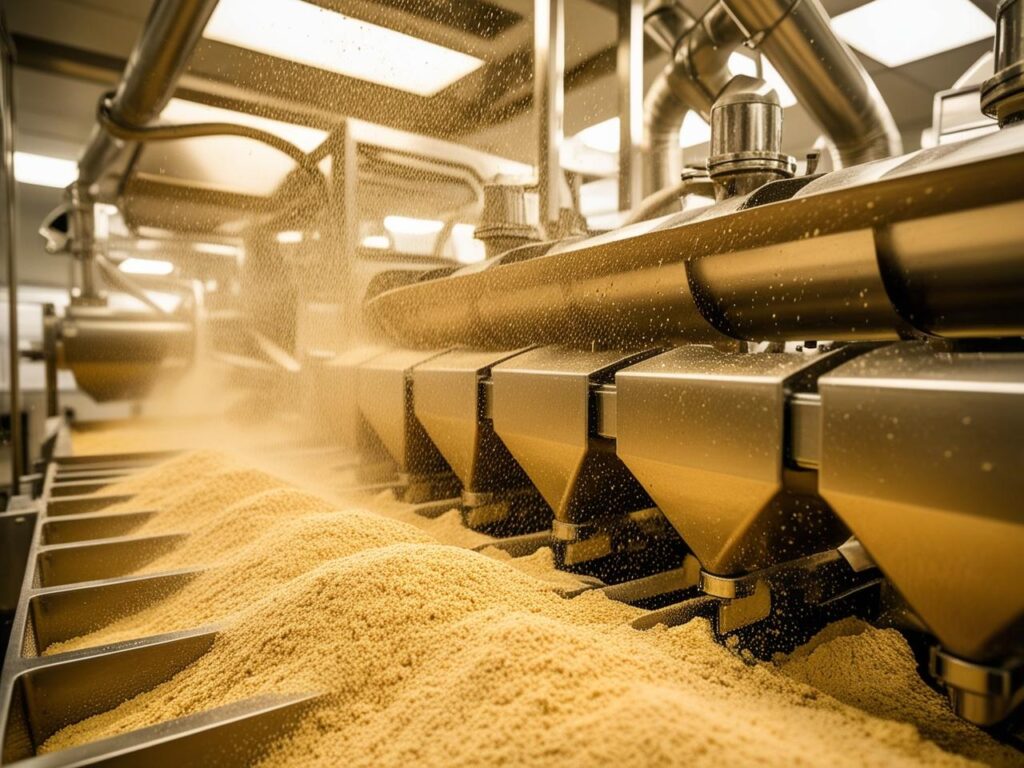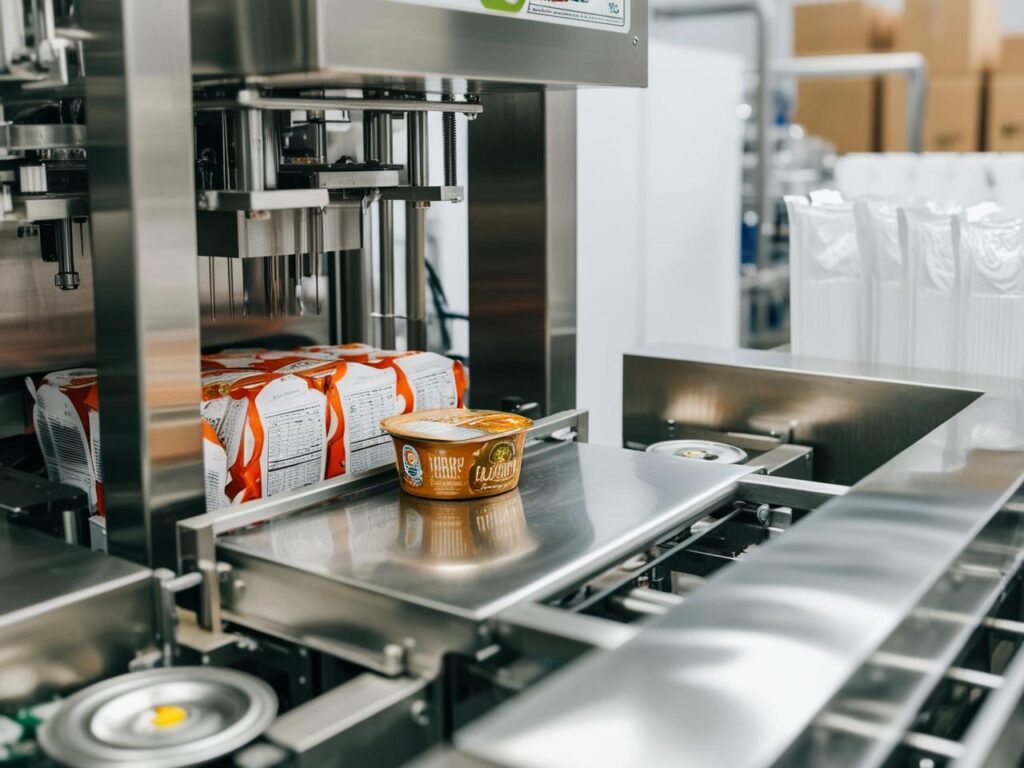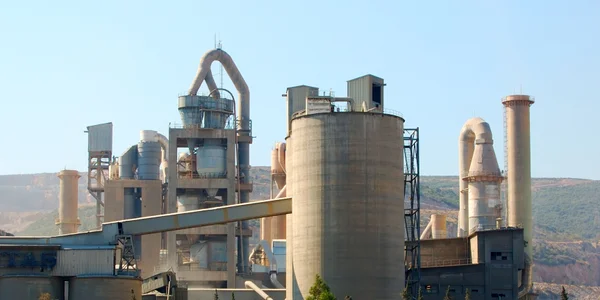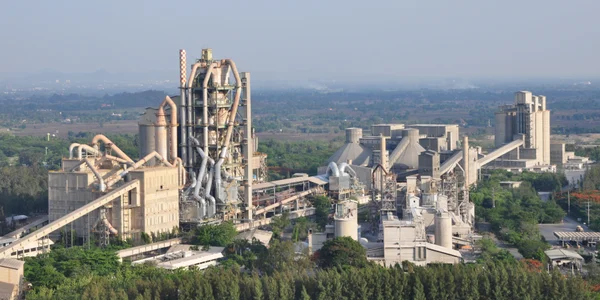Kanceláře
ŘEDITELSTVÍ

Německo
- Intenzivní filtr Himenviro Technologies GmbH
Neustraße 45 - 49, 42553, Velbert, Německo/Německo - +49 20534200990
KRAJSKÝ ÚŘAD

Velká Británie
- Intenzivní filtr Himenviro UK Limited
47, Bath Street WS13BX, Wallsall West Midlands, Velká Británie - +44 1922 628893
KRAJSKÝ ÚŘAD

Spojené arabské emiráty
- Intenzivní filtr Himenviro Technologies FZE – LLC
Obchodní centrum, Sharjah Publishing City Free Zone, Sharjah, Spojené arabské emiráty - +971-556074697
KRAJSKÝ ÚŘAD

Indie
- Intensiv-Filter Himenviro Private Limited
D-247/11, Sector-63, Noida – 201301, Uttar Pradesh, Indie - +91-120-4642-500
KRAJSKÝ ÚŘAD

Indie
- Intensiv-Filter Himenviro Private Limited
D-247/11, Sector-63, Noida – 201301, Uttar Pradesh, Indie - +91-120-4642-500
KRAJSKÝ ÚŘAD

Indie
- Intensiv-Filter Himenviro Private Limited
D-247/11, Sector-63, Noida – 201301, Uttar Pradesh, Indie - +91-120-4642-500
Řešení pro filtraci vzduchu a prachu v potravinářském průmyslu
Potravinářský a nápojový průmysl je komplexní a vysoce regulovaný sektor, který se spoléhá na přesné procesy a přísné hygienické normy. Jedním z klíčových aspektů dodržování těchto norem je účinná kontrola prašnosti. Procesy, jako je manipulace s obilím, míchání, míchání a balení, generují jemné prachové částice, které mohou kontaminovat produkty, představovat zdravotní rizika pro pracovníky a potenciální nebezpečí výbuchu.
Abychom se s těmito výzvami vypořádali, nabízíme pokročilé filtrační řešení speciálně navržené pro potravinářský a nápojový průmysl. Naše systémy jsou navrženy tak, aby zachycovaly a odstraňovaly prachové částice, a tím zajišťovaly čistotu produktů, bezpečnost pracovníků a shodu s předpisy.
Proces filtrace prachu v potravinářském průmyslu
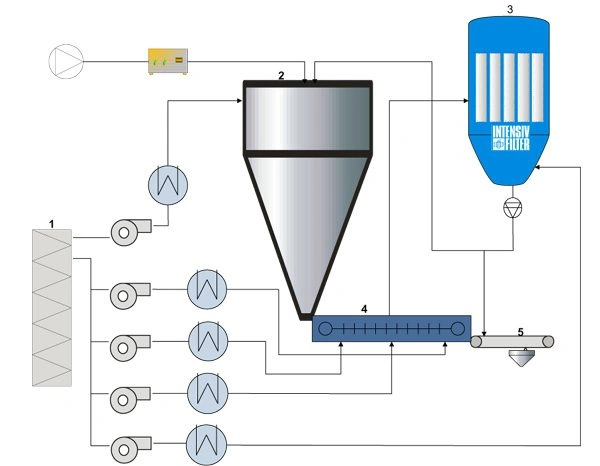
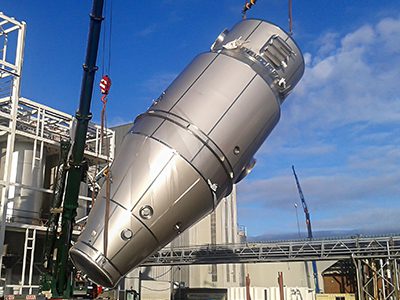
- 1. Vnější filtr
- 2. Rozprašovací sušička
- 3. CIP filtr
- 4. Externí fluidní lože
- 5. Plnění
Požadovaná specifikace pro CIP filtr
Typická konstrukční data | CIP filtr |
|---|---|
Objem plynu | < 230 000 m³/h |
Teplota plynu | 80–90 °C |
Druh prachu | Sušené mléčné výrobky |
Zbytkový obsah prachu | < 10 g/m³ |
Obsah prachu v surovém plynu | 20 mg/m³ |
Čištění | On-line |
Filtrační médium | Polyester |
Konstrukce s odolností proti výbuchu | Ano |
Sorbent |

Aplikace našich produktů pro potravinářský průmysl

Zachycujte prach vznikající při přepravě sypkých materiálů, jako jsou zrna, prášky a vločky.
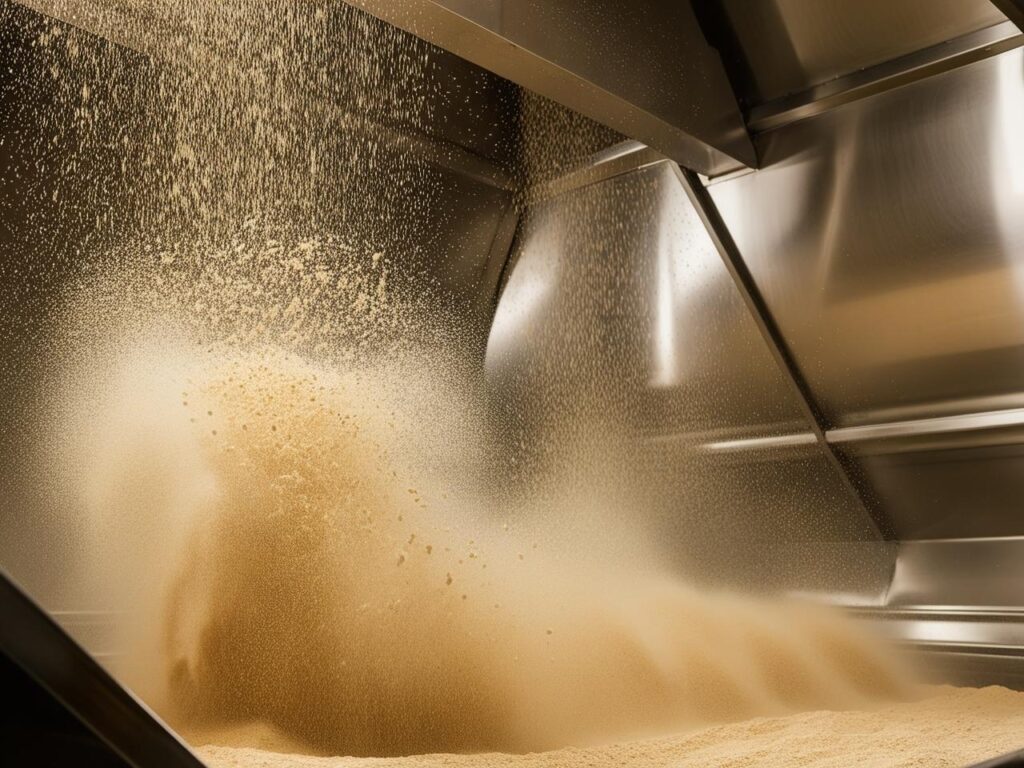
Regulační prostředí pro kontrolu prachu |
|---|
Předpisy o bezpečnosti potravin |
Dodržování standardů FDA a USDA |
Bezpečnost a ochrana zdraví pracovníků |
Dodržování předpisů OSHA |
Prevence požárů a výbuchů |
Implementace standardů NFPA |
Ochrana životního prostředí |
Kvalita a konzistence produktů |
Snížené prostoje a náklady na údržbu |
Problémy s kontrolou prachu |
|---|
Kontaminace produktu |
Zdravotní rizika pracovníků |
Nebezpečí požáru a výbuchu |
Soulad s předpisy |
Křížová kontaminace |
Mikrobiální růst |
Dodržování přísných předpisů o bezpečnosti potravin |
Snížená kvalita produktu |
Poškození zařízení |
Klíčové aspekty pro efektivní kontrolu prachu |
|---|
Zavést efektivní zachytávání prachu |
Zajistěte správný proudění vzduchu a tlak |
Sušené mléčné výrobky |
Používejte vysoce účinné filtrační systémy |
Pravidelná údržba a inspekce |
Dodržujte oborové standardy |
Pravidelně kontrolujte systém pro regulaci prachu |
Úvahy specifické pro daný proces |
Posouzení a zmírňování rizik |
Spojte se s námi pro odbornou konzultaci
Prozkoumejte naše další služby !
Často kladené otázky
V potravinářském průmyslu zahrnují běžné filtrační systémy membránové filtry (jako je mikrofiltrace, ultrafiltrace, nanofiltrace a reverzní osmóza), hloubkové filtry, filtry s aktivním uhlím a systémy ultrafialového (UV) záření. Tyto technologie se používají k odstranění fyzikálních, chemických a biologických kontaminantů a zajišťují tak čistotu a bezpečnost produktu.
Filtrační systémy zajišťují shodu s normami bezpečnosti potravin tím, že ze surovin a produktů účinně odstraňují kontaminanty, včetně mikroorganismů, částic a chemických zbytků. Tento proces čištění pomáhá splňovat regulační požadavky a udržovat vysoké standardy kvality konečných potravinářských výrobků.
Filtrační systémy udržují kvalitu a konzistenci produktů odstraňováním nežádoucích částic, mikroorganismů a dalších kontaminantů ze složek i konečných produktů. To zajišťuje, že každá šarže splňuje požadované standardy čistoty a kvality, což vede k jednotnosti chuti, vzhledu a bezpečnosti u všech produktů.
